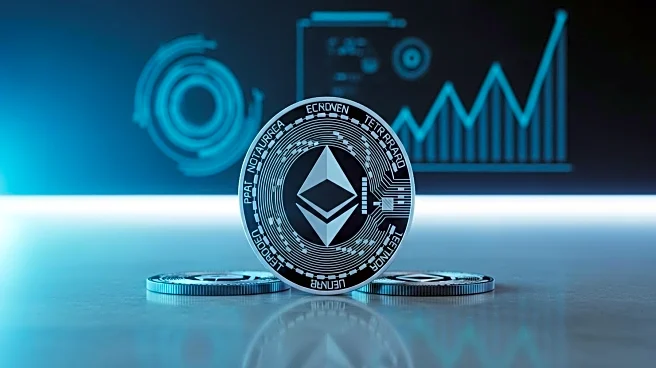What is the story about?
What's Happening?
Coinbase Global has achieved significant milestones in the digital asset market, including the enactment of the GENIUS Act and its inclusion in the S&P 500. The GENIUS Act, signed into law on July 18, 2025, provides a clear framework for USD-backed stablecoins like USDC, requiring 1:1 reserve backing and monthly disclosures. This regulatory clarity has bolstered consumer confidence and spurred institutional adoption, with stablecoin-driven trading cycles now accounting for a substantial portion of Coinbase's revenue. Additionally, Coinbase has expanded its operations in Europe by securing a Markets in Crypto-Assets (MiCA) license, allowing it to operate across all 27 EU member states. The company's inclusion in the S&P 500 marks a significant shift in Wall Street's perception of digital assets, attracting institutional flows and improving liquidity.
Why It's Important?
The GENIUS Act and MiCA compliance have created a regulatory environment that reduces the risk of abrupt policy shifts, aligning with Coinbase's advocacy for a bank-centric framework. This has enhanced institutional trust and adoption, positioning Coinbase as a leader in the stablecoin market. The company's inclusion in the S&P 500 further legitimizes digital assets as mainstream financial tools, attracting a broader pool of institutional capital. As stablecoin ecosystems expand, Coinbase's infrastructure positions it to capture a growing share of the value chain, making it a compelling investment opportunity.
What's Next?
Coinbase's strategic expansion and regulatory wins suggest continued growth and increased market share in the digital asset space. The company's focus on stablecoin-driven revenue streams and global regulatory alignment positions it to thrive in an era where digital assets are increasingly integrated into traditional financial systems. Investors may see further upside potential as Coinbase continues to innovate and expand its offerings.
AI Generated Content
Do you find this article useful?

















